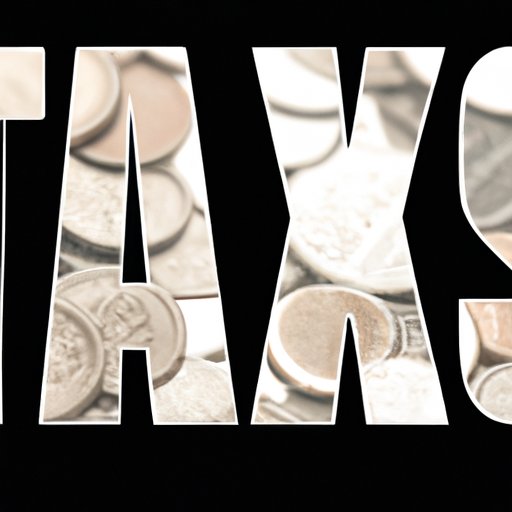
Introduction
Understanding tax thresholds is an important part of financial planning for anyone who earns an income. Knowing how much you need to earn to file taxes can help you better prepare for tax season and avoid costly mistakes. In this article, we’ll explore everything you need to know about tax thresholds, including federal and state income limits, deductions, and penalties for failing to file.
A Beginner’s Guide to Understanding Taxable Income Thresholds
Before we dive into tax thresholds, let’s quickly clarify what we mean by ‘taxable income.’ Taxable income is the income you earn that is subject to federal and state income tax. This can include wages, salaries, tips, and other types of income.
To calculate your taxable income, you’ll need to subtract any deductions or exemptions from your total income. Deductions are expenses that you can subtract from your income, lowering the amount of income that’s subject to tax. Exemptions are amounts that are not subject to tax, such as contributions to a tax-deferred retirement account.
The income thresholds for federal and state tax filing can vary depending on your filing status (single, married, etc.) and other factors. For the 2021 tax year, the federal income threshold for single filers is $12,550, and for married couples filing jointly, it’s $25,100. You can find the most up-to-date federal income thresholds on the IRS website.
Can You Avoid Filing Taxes? Exploring Income Limits and Exemptions
While everyone who earns taxable income is theoretically required to file taxes, there are some exemptions and deductions that can lower your taxable income below the filing threshold.
For example, if you’re single with no dependents, you may be able to claim a standard deduction of $12,550 for the 2021 tax year. If your taxable income after deductions is less than this amount, you may not be required to file taxes.
However, keep in mind that there are certain circumstances, such as self-employment income, where you may be required to file taxes even if your income is below the threshold. Additionally, some states have their own income tax filing requirements, which may differ from federal requirements.
The Consequences of Not Filing Taxes
If you fail to file your taxes, there can be some serious consequences. Not only will you be subject to penalties and interest on any tax owed, but you could also face legal consequences in some cases.
Penalties for failing to file taxes can be steep. For example, if you owe taxes and do not file your return on time, you may be subject to a failure-to-file penalty of 5% of the unpaid tax amount for each month your return is late, up to a maximum of 25% of your unpaid tax bill.
Additionally, if you do not pay your tax bill in full, you will be subject to interest on the unpaid balance. The interest rate can change from year to year, but it is typically in the range of 5-6%.
How to Estimate Your Taxable Income and Determine If You Need to File
If you’re unsure whether or not you need to file taxes, there are a few steps you can take to estimate your taxable income and determine your filing status.
First, start by gathering all of your income documents, such as W-2s, 1099 forms, and bank statements. Next, calculate your total income for the year, including any self-employment income or investment income.
Once you have your total income figured out, subtract any eligible deductions to arrive at your taxable income. If your taxable income is below the threshold for your filing status, you may not be required to file taxes.
Navigating Tax Obligations for Different Income Sources
For those who earn income from non-traditional sources, such as self-employment or side businesses, the tax filing process can be a bit more complicated.
Self-employed individuals may need to file additional forms, such as Schedule C or Schedule SE. Additionally, self-employed individuals are typically responsible for paying estimated taxes throughout the year, since they do not have an employer withholding taxes from their paycheck.
If you earn income from a side business or a rental property, you may also need to file additional forms and keep detailed records of your income and expenses.
Understanding Taxable Income by State
While federal income tax regulations apply to everyone, state income tax requirements can vary significantly depending on where you live.
Some states have no income tax at all, while others have their own income tax rates and income thresholds. To find out the income tax requirements for your state, check your state’s Department of Revenue website or consult with a tax professional.
Conclusion
Understanding tax thresholds and filing requirements is an important part of managing your finances and avoiding costly mistakes. Remember to factor in deductions and exemptions when calculating your taxable income, and don’t hesitate to seek out professional tax advice if you need it.
By following these guidelines and staying informed about tax regulations, you can ensure that you’re meeting your tax obligations and keeping your finances on track.





